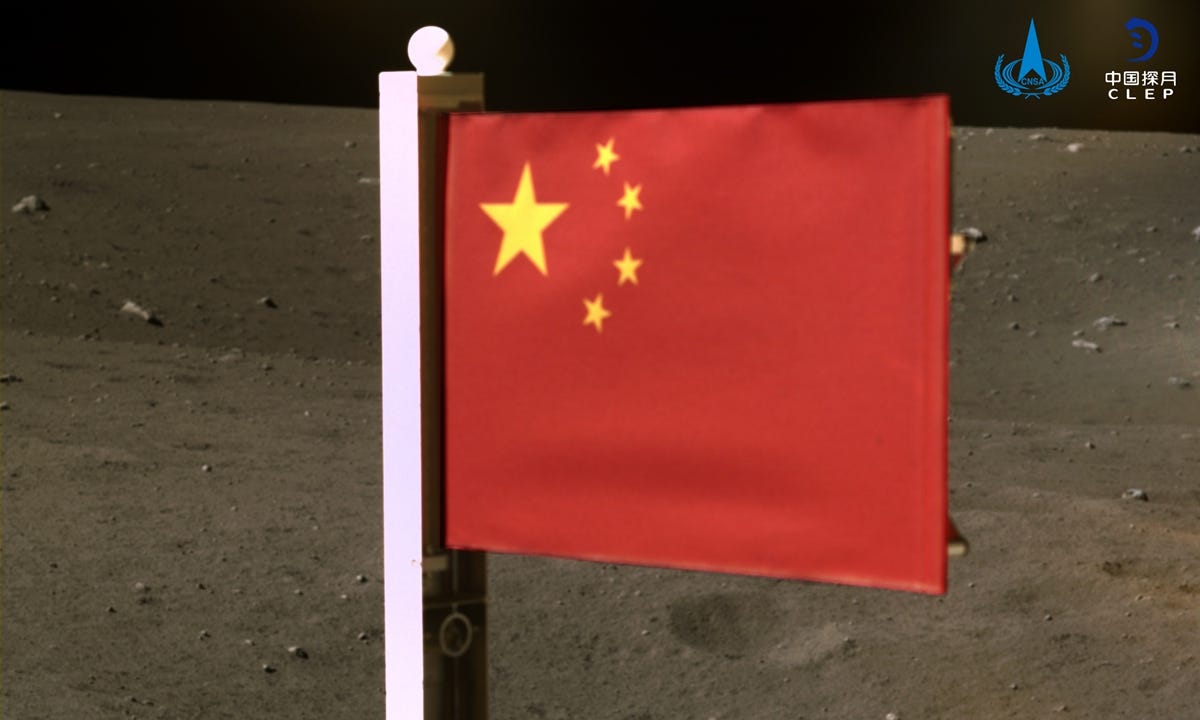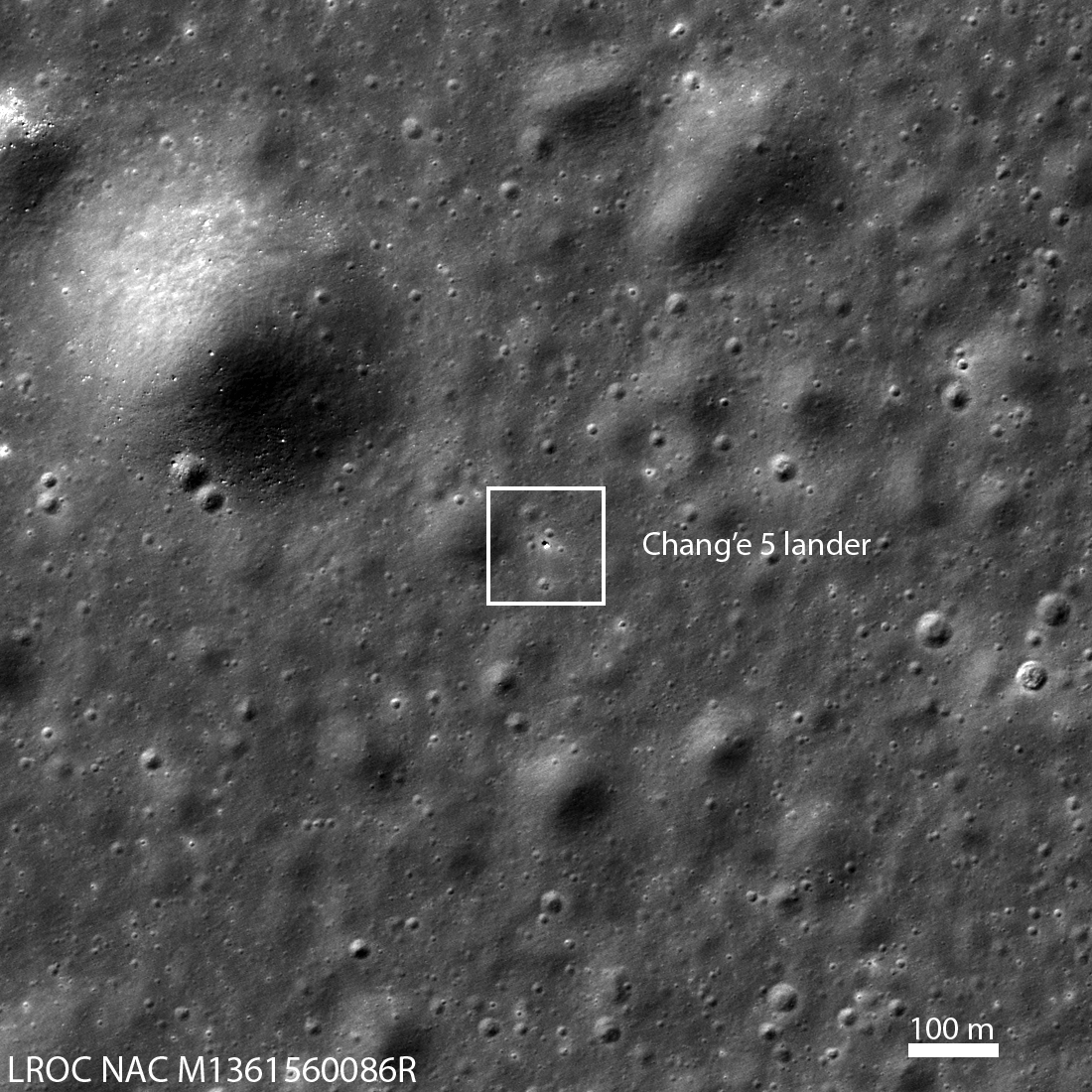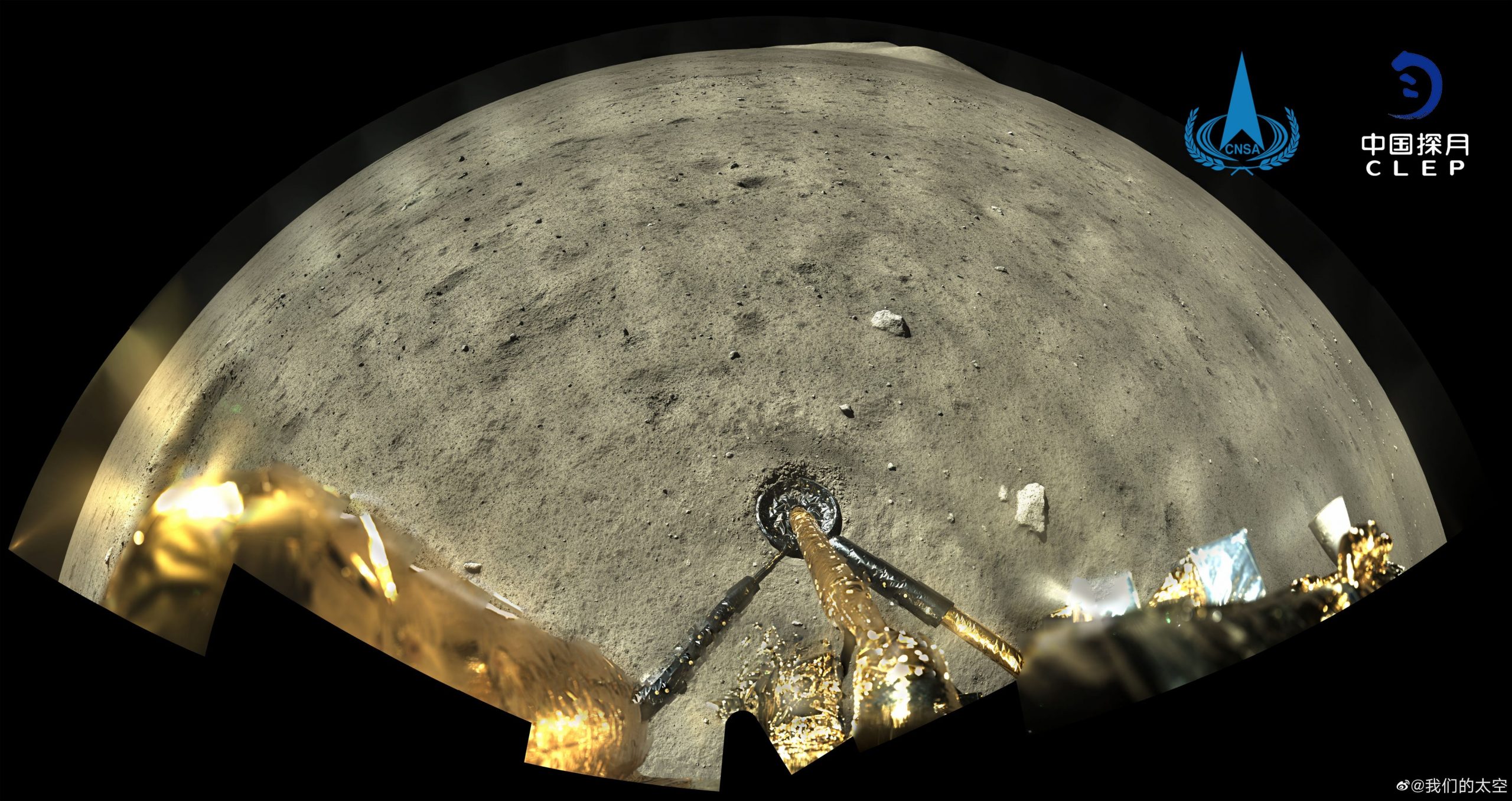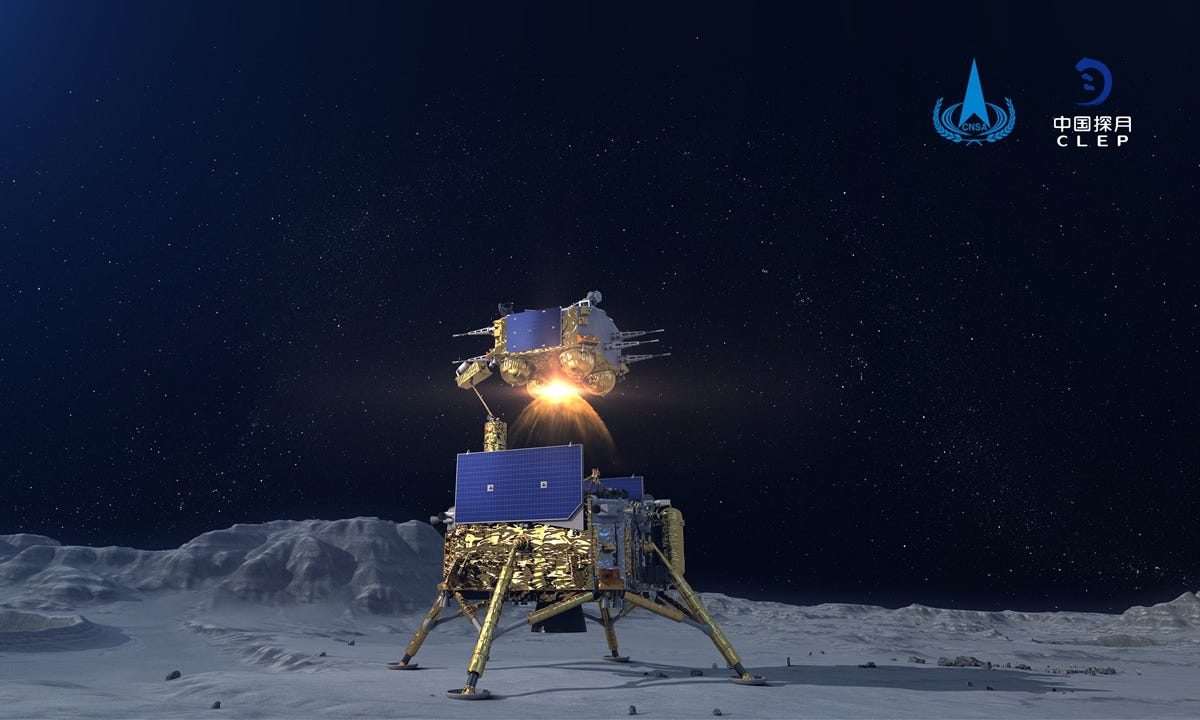
CNSA
- NASA images have confirmed the landing of China’s Chang’e 5 moon robot.
- China’s space agency said the lander collected more than 4 pounds of moon rocks. The mission is slated to bring the sample back to Earth by mid-December.
- If successful, it will be the first time a country has brought home moon rocks in more than 40 years.
- Visit Business Insider’s homepage for more stories.
China landed a rock-collecting robot on the moon on Tuesday, its latest in a series of ambitious lunar missions. Less than two days later, the spacecraft’s ascent module blasted back into the moon’s orbit carrying more than 4 pounds of rock samples, according to the China National Space Administration (CNSA).
The lander was one of four robots used in the mission, called Chang’e-5, which aims to bring a sample of the moon’s surface back to Earth before the end of December. If successful, it will be the first time a country has brought home moon rock in more than 40 years.
On Friday, NASA released images taken by its Lunar Reconnaissance Orbiter satellite that confirm the lander’s presence on the moon. The images show the Chang’e 5 lander in the middle of three craters.
Surrounding the landing site is Oceanus Procellarum, a region on the moon’s near side formed by ancient volcanic eruptions.

LROC/NASA
“The cool thing is we got the image in the two-day window before the ascent stage left. In a month, we can reimage the site to see what changed from the ascent,” Noah Petro, a lunar scientist with NASA’S Goddard Space Flight Center, told Business Insider.
The CNSA published several photos of its own prior to NASA's confirmation. On Friday, the state-run media organization Global Times published an image of the Chinese flag unfurled from the lander.
On Wednesday, the CNSA released a panoramic image taken from the lander's perspective (shown below).

CNSA
The first moon rocks collected since 1976
On Thursday, the Chang'e 5 lander's robotic arm drilled about 6 feet into the lunar surface to collect lunar rock and dust from a previously unexplored area: a volcanic mound called Mons Rümker. The material may provide new information about the moon's past volcanic activity.
After 19 hours of digging and collecting, the arm transferred the sample to an ascent module on top of the lander. With the sample secure, that module then lifted off to rendezvous with an orbiter spacecraft that had remained circling the moon.
It's still in lunar orbit, and has an Earth reentry module in tow.

CNSA
If all goes well in the rest of the mission, the capsule carrying the moon sample is expected to land in Inner Mongolia in mid-December.
The sample could reveal whether the moon displayed volcanic activity as recently as 1.2 billion years ago - that's how old scientists estimate the Mons Rümker plain to be.
Such a discovery that could "rewrite the history of the moon," Xiao Long, a planetary geologist at the China University of Geosciences in Wuhan, told Nature in November.
So far, scientists have only been able to study moon-rock samples from lunar regions that are 3 billion years old or more, so their knowledge of the moon's volcanic activity ends around then. The moon rocks will also likely help scientists estimate this lunar region's age more precisely.
The last time any country collected lunar rocks was in 1976, when the Soviet Union's last Luna mission returned to Earth.
Dave Mosher contributed reporting.
